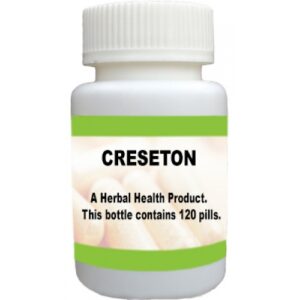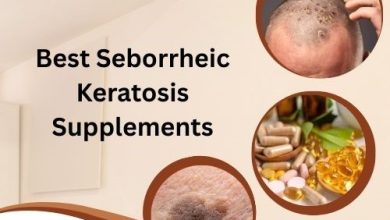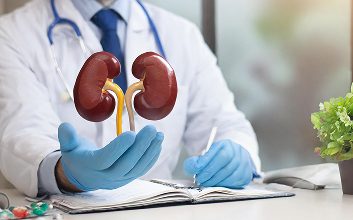Bronchiectasis Relief in a Bottle? Discover These Powerful Supplements

Living with bronchiectasis can feel like an uphill battle. The chronic coughing, persistent mucus production, and frequent infections can significantly impair quality of life. While traditional treatments like antibiotics, physiotherapy, and inhalers are widely used, many individuals are now exploring Natural Treatment for Bronchiectasis to complement or reduce dependence on pharmaceutical interventions.
These natural remedies for bronchiectasis aim to reduce inflammation, support lung health, and bolster the immune system—potentially providing real relief in a bottle.
What is Bronchiectasis?
Bronchiectasis is a chronic lung condition that affects thousands of individuals worldwide, yet it remains underrecognized and often misunderstood. This article will provide a detailed overview of bronchiectasis, covering its causes, symptoms, diagnosis, treatment options, and ways to manage the condition for a better quality of life.

Related Article: Bronchiectasis Causes, Symptoms, Diagnosis and Treatment
Understanding Bronchiectasis
Bronchiectasis is a long-term respiratory disease characterized by permanent widening and damage to the bronchi, the airways that carry air in and out of the lungs. This abnormal dilation leads to a buildup of mucus, creating a breeding ground for bacteria and recurrent infections. Over time, this cycle of infection and inflammation can cause further damage to the lungs, reducing their ability to function effectively.
The term “bronchiectasis” comes from the Greek words bronchos (airway) and ektasis (expansion), directly describing the dilated airways seen in affected individuals.
How the Lungs Are Normally Structured
To fully understand bronchiectasis, it’s essential to grasp the basic anatomy of the lungs. The lungs contain a branching system of airways starting with the trachea (windpipe), which splits into the bronchi and then further subdivides into smaller bronchioles, ending in tiny air sacs called alveoli. These alveoli are where gas exchange takes place—oxygen is absorbed into the blood, and carbon dioxide is exhaled.
In bronchiectasis, the larger airways (bronchi) become damaged, resulting in:
- Loss of the ability to clear mucus effectively
- Chronic infection and inflammation
- Obstruction and airflow limitation
Causes of Bronchiectasis
Bronchiectasis can be caused by a variety of underlying conditions. In some cases, no clear cause is identified, which is termed idiopathic bronchiectasis. However, known causes include:
- Previous Infections
- Severe pneumonia, tuberculosis (TB), or whooping cough can damage the airways permanently.
- Cystic Fibrosis
- A major genetic cause of bronchiectasis, especially in children and young adults. In fact, cystic fibrosis-related bronchiectasis is often classified separately due to its distinct pathophysiology.
- Immunodeficiency
- People with weakened immune systems (either from disease or medication) are more prone to infections that can lead to bronchiectasis.
- Autoimmune Diseases
- Conditions like rheumatoid arthritis, systemic lupus erythematosus (SLE), and Sjogren’s syndrome can be associated with the development of bronchiectasis.
- Allergic Bronchopulmonary Aspergillosis (ABPA)
- This is an exaggerated immune response to the fungus Aspergillus, often seen in asthma or cystic fibrosis patients.
- Primary Ciliary Dyskinesia
- A rare inherited condition where the cilia (tiny hair-like structures that move mucus) do not function properly, leading to mucus buildup.
- Inhalation of Foreign Bodies or Toxic Fumes
- Aspiration of food or inhalation of harmful substances can result in localized damage to the bronchi.
Signs and Symptoms
Bronchiectasis symptoms can vary widely between individuals depending on the severity and extent of the disease. However, common signs include:
- Chronic Cough
- Often productive, meaning it brings up large amounts of thick mucus (sputum).
- Recurrent Respiratory Infections
- Frequent chest infections that require antibiotics.
- Shortness of Breath
- Particularly during physical activity or in more advanced stages.
- Wheezing and Chest Tightness
- Similar to asthma symptoms but more persistent.
- Fatigue and Weight Loss
- Ongoing inflammation and infection can take a toll on overall health.
- Clubbing
- Enlargement of the fingertips (digital clubbing) can occur in advanced cases.
Bronchiectasis Relief Options:
Bronchiectasis is a chronic respiratory condition that results in the permanent widening and damage of the bronchial tubes, leading to mucus build-up, recurrent infections, and breathing difficulties. Although there is no cure, various bronchiectasis relief options can significantly ease symptoms, reduce flare-ups, and improve overall lung function.
We will explore medical treatments, Natural Treatment, lifestyle changes, natural remedies, Natural Supplements and supportive therapies available to patients living with bronchiectasis. Whether you’re newly diagnosed or seeking better symptom control, this guide offers a thorough overview of proven strategies.
Why Consider Natural Treatment for Bronchiectasis?
Chronic use of antibiotics and other medications can lead to side effects and antibiotic resistance. Supplements and Herbs Solutions By Nature may offer:
- Anti-inflammatory benefits
- Antimicrobial support
- Immune system modulation
- Enhanced mucus clearance
- Improved respiratory function
Moreover, these natural remedies for bronchiectasis may be safer for long-term use and work well alongside conventional therapies.
Related Article: Natural Remedies for Bronchiectasis Relief pain with Ginger
Top Natural Supplements for Bronchiectasis Relief
Let’s explore some of the most researched and promising supplements considered part of natural treatment for bronchiectasis.
1. N-Acetylcysteine (NAC)
What it is: NAC is a precursor to glutathione, the body’s most powerful antioxidant.
How it helps: NAC thins mucus, making it easier to clear from the lungs. It also reduces oxidative stress and inflammation, which are critical in managing bronchiectasis.
Evidence: Several clinical studies have shown NAC’s effectiveness in reducing exacerbations in chronic respiratory diseases, including COPD and bronchiectasis.
Suggested dose: 600–1,200 mg per day (consult your healthcare provider).
2. Quercetin
What it is: A flavonoid found in onions, apples, and berries.
How it helps: Quercetin has anti-inflammatory, antiviral, and antihistamine properties. It supports immune health and may reduce lung inflammation.
Evidence: Research suggests that quercetin inhibits the production of histamines and cytokines, key drivers of chronic inflammation in bronchiectasis.
Suggested dose: 500–1,000 mg daily with bromelain for better absorption.
Related Article: Infected Bronchiectasis Treatment and Symptoms
3. Boswellia Serrata (Frankincense)
What it is: An herbal extract used in Ayurvedic medicine.
How it helps: Boswellia inhibits 5-lipoxygenase, an enzyme involved in inflammation. It may reduce airway inflammation and improve breathing.
Evidence: Studies indicate that Boswellia may be effective in chronic inflammatory conditions like asthma and bronchitis, offering promise for bronchiectasis.
Suggested dose: 300–500 mg of standardized extract, 1–2 times daily.
4. Vitamin D3
What it is: A fat-soluble vitamin crucial for immune regulation.
How it helps: People with chronic lung conditions often have low vitamin D levels. Supplementing may enhance immune function and reduce respiratory infections.
Evidence: Multiple studies link vitamin D deficiency to worse outcomes in bronchiectasis and other chronic respiratory illnesses.
Suggested dose: 2,000–5,000 IU daily depending on your blood levels.
Related Article: Talsical: A Natural Bronchiectasis Herbal Supplement
5. Omega-3 Fatty Acids (Fish Oil)
What it is: Anti-inflammatory fats found in fatty fish.
How it helps: Omega-3s reduce lung inflammation and improve overall immune function. They may also help combat fatigue and systemic inflammation common in bronchiectasis.
Evidence: Clinical trials have shown omega-3s reduce symptoms in various lung diseases, making them a key component of natural treatment for bronchiectasis.
Suggested dose: 1–3 grams of combined EPA/DHA per day.
6. Probiotics
What they are: Beneficial bacteria that support gut and immune health.
How they help: The gut-lung axis is real. A healthy gut microbiome strengthens immune defense in the lungs, potentially reducing infection frequency.
Evidence: Some studies show that probiotics help reduce inflammation and bacterial overgrowth in respiratory tracts.
Suggested dose: Choose a multi-strain probiotic with at least 10 billion CFU per serving.
7. Zinc
What it is: An essential mineral critical for immune function.
How it helps: Zinc supports the immune system and may help prevent respiratory tract infections, a major concern in bronchiectasis patients.
Evidence: Zinc deficiency is associated with impaired immunity and increased infection risk.
Suggested dose: 15–30 mg daily (zinc picolinate or gluconate preferred).
8. Curcumin (Turmeric Extract)
What it is: The active compound in turmeric, a potent anti-inflammatory.
How it helps: Curcumin modulates inflammatory pathways and may reduce lung tissue inflammation. It also has mild antibacterial effects.
Evidence: Though more research is needed for bronchiectasis specifically, studies support curcumin’s role in reducing inflammation in chronic pulmonary diseases.
Suggested dose: 500–1,000 mg of curcumin extract with black pepper (piperine) for absorption.
9. Mullein Leaf
What it is: An herbal remedy known for its soothing effect on the lungs.
How it helps: Mullein acts as an expectorant, helping the body expel mucus. It also soothes irritated respiratory tissues.
Evidence: Widely used in traditional medicine, it has anecdotal and herbalist support for bronchiectasis symptoms.
Suggested use: Tea or tincture form, 1–2 times daily.
Related Article: Say Goodbye to Bronchiectasis: Effective Remedies You Must Try
10. Andrographis Paniculata
What it is: A medicinal herb used in traditional Asian medicine.
How it helps: Known for its antiviral and immune-boosting properties, Andrographis may reduce the frequency and severity of infections.
Evidence: Some clinical studies have shown it can shorten the duration of colds and respiratory infections.
Suggested dose: 200–400 mg of standardized extract, 2–3 times per day during infection flare-ups.
Lifestyle Factors That Enhance Supplement Effectiveness
Taking supplements alone may not yield full results unless combined with healthy habits. Here are key lifestyle practices to support your natural treatment for bronchiectasis:
- Stay hydrated – Water thins mucus naturally.
- Use a humidifier – Keeps airways moist and helps prevent irritation.
- Do airway clearance exercises – Daily techniques like postural drainage or devices like Flutter or Acapella aid mucus removal.
- Eat an anti-inflammatory diet – Focus on whole foods, colorful fruits, leafy greens, and omega-3-rich fish.
- Avoid triggers – Smoke, pollutants, and allergens can worsen bronchiectasis symptoms.
- Regular physical activity – Enhances lung function and immunity.
Caution and Considerations
While Natural Remedies for Bronchiectasis offer exciting possibilities, they must be used wisely:
- Consult your doctor before starting any new supplement, especially if you’re on medications or have other conditions.
- Watch for interactions. Some supplements, like turmeric or fish oil, can thin the blood and interact with medications.
- Don’t replace essential medications. Supplements are adjuncts, not substitutes, for medical treatments like antibiotics or bronchodilators.
Final Thoughts: Is Relief in a Bottle Possible?
While there’s no single magic pill, the idea that relief from bronchiectasis could come—in part—from a bottle of carefully selected supplements is increasingly supported by both science and personal experience.
By targeting inflammation, boosting immunity, and aiding mucus clearance, these supplements represent a powerful toolkit in your holistic management of the disease.





